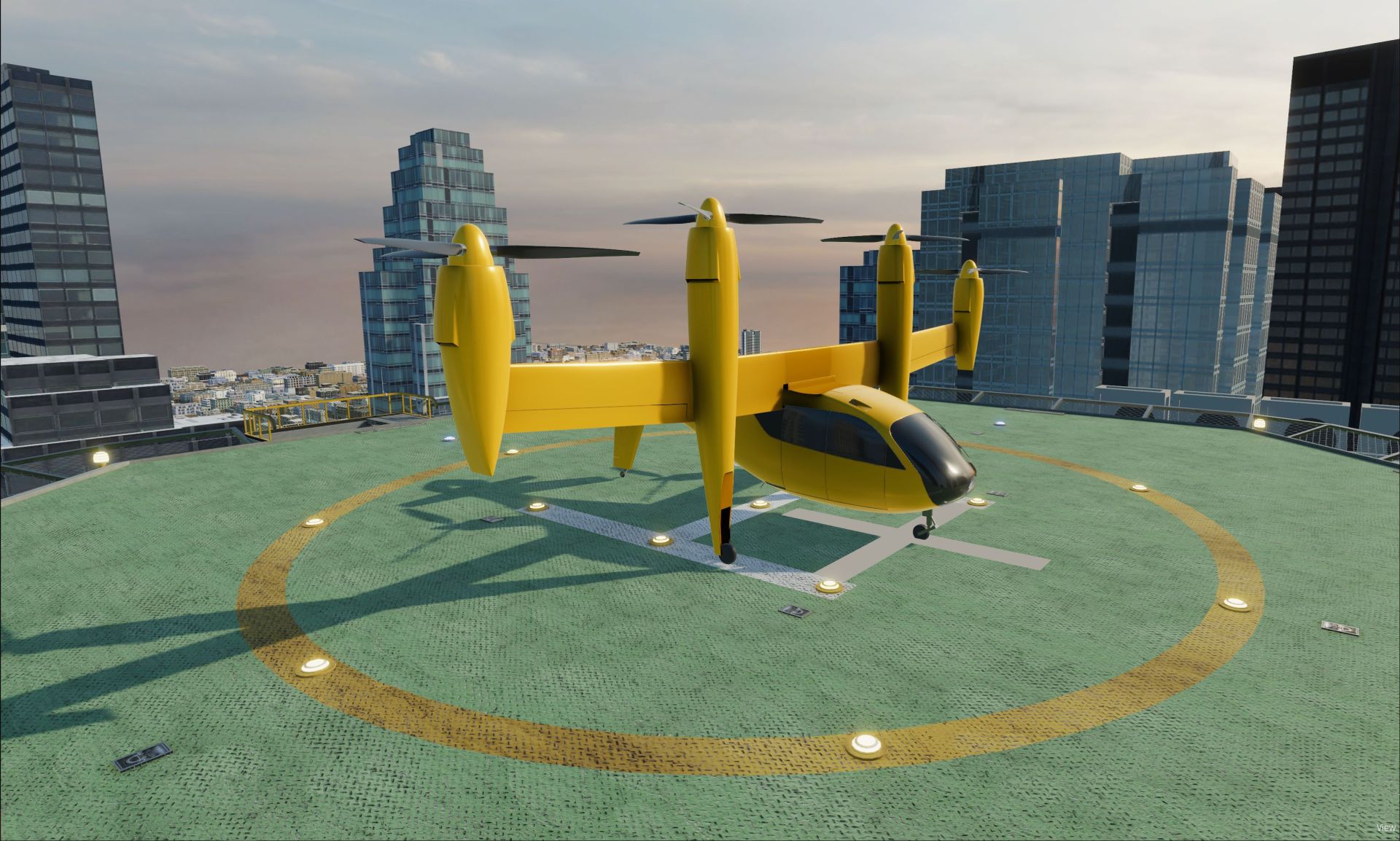Czech Aerospace Research Centre Builds
Revolutionary MiYa Aircraft in Virtual Reality Virtual reality has significantly contributed to developing a new type of aircraft.
Revolutionary MiYa Aircraft in Virtual Reality Virtual reality has significantly contributed to developing a new type of aircraft.
This VR model was shown to be significant not just for the project’s business partners and investors, but also for the client’s project team, which fine-tuned the ergonomics and locations of certain elements in VR.
The Czech Aerospace Research Centre’s Aviation 2030 project included as one of its main goals the development of the MiYa autonomous aircraft. The institution is thus returning to its original position as the research and development base for the Czech aerospace industry; birthing innovative new projects that are then undertaken by other enterprises.
MiYa is an air transport system that incorporates the latest trends in aerospace
development. The aircraft has been proposed with future military use in mind, as well as civilian logistics and possibly transporting passengers as part of Urban Air Mobility (UAM). The aircraft is capable of vertical landing and take-off and a top cruising speed of 300 km/h. It can carry 400kg of cargo or four passengers while offering a maximum range of 300km. The system was designed to be autonomous, but it differentiates itself from its competitors by using tilt-wing technology that has proven to be the best for the desired results despite requiring more complex solutions.
The Task
Considering the scope of the project, the centre chose to work with the Virtuplex and had the MiYa transposed into virtual reality. The client sought a tool that would present a realistic life-sized model to present to key groups and better show the uses the project’s potential once it’s completed within six years. The centre already has one smaller functional prototype used to develop and perfect the aircraft’s ergonomics and to test operation even in adverse conditions. Even though this model is sufficient for development and testing, it still only resembles the final design of the MiYa transport system.
The Solution
Virtuplex transposed into VR a cargo version of the MiYa to be used for military and civilian logistics. To perfect the feeling of immersion, the developers placed the aircraft into a desert environment and designed a heliport on a skyscraper in a large city. They worked with the sound to simulate the noise of a metropolis and its intensity corresponds to a person approaching the edge of the building or as they move away from the noise. The VR demonstration also includes the aircraft taking off.
“The results of the VR project completely fulfilled our expectations. The ability to simulate motion was just the cherry on top that we didn’t plan originally, but the Virtuplex staff incorporated it into the presentation concept very successfully,” Petr Raška from the Czech Aerospace Research Centre said.
Several presentations for representatives of state bodies, project partners, investors, and aerospace and research specialists from around the world took place in the Virtuplex. The client could thus present the results achieved thus far and discuss the use of VR in the subsequent phases of the project while showing the capabilities of the Czech aerospace industry and the parameters of the proposed aircraft. Finally, the goals also included creating interest among investors about the project as such. The VR model also proved to be important for the project team, which used VR to fine-tune the MiYa’s ergonomics.
“We’re pleased we could help birth something completely new that isn’t in operation yet. We usually have experience with concepts that are tested and proven such as cars, buildings, and other architectural proposals. This project with the Czech Aerospace Research Centre allows us to be part of the launch of a visionary method of travel and transport, and not just packages, but it could be the future for passengers as well. The boundaries of VR are thus expanding even further and the potential for its use continues to grow,” Virtuplex’s Michael Sidó said.

“The Virtuplex team was professional, effective, and responsive. We as novices in VR presented our ideas and feelings, and the Virtuplex team was able to immediately propose functional VR solutions. We plan to continue to cooperate with the Virtuplex on products that will demand life-sized models in VR based on these positive experiences.
Josef Kašpar, CEO, Czech Aerospace Research Centre